Myanmar continues to struggle amidst the COVID-19 pandemic, revealing its deep socio-economic problems, concerning poverty, hunger, internally displaced people and ethnic armed organisations. The military operations continue unabated in Rakhine, Chin, Shan and Karen areas. The clashes between the Arakan Army and the military further escalated since it was declared an ‘Unlawful Organisation’ in March 2020. Press freedom has deteriorated due to the arrests of journalists and internet shutdowns, violating the freedom of expression. The decision to continue with sanctions by the European Union and United Kingdom has dented Myanmar’s efforts for conflict resolution. Amidst these concerns, there has been the biggest seizure of drugs by the Tatmadaw in Shan State. The annual release of political prisoners on account of New Year made an important mark, as it has been one of the biggest such releases in the past few years. Due to COVID-19, new initiatives have been taken to build up bilateral relations and improve trade with India.
COVID-19
According to the World Health Organisation (WHO), 101 Situation Report, Myanmar has recorded 150 cases and six deaths as on 30 April 2020.1 Despite a low number of cases reported, the Health Ministry raised concern as less than 7,000 people had been tested till 26 April; hence the restrictions have further been extended until 15 May.2 The Parliament has rescheduled its 16th regular session for 18 May, which was initially scheduled to resume on 27 April.
In order to provide regular updates about the spread of COVID-19, Myanmar launched an application (hereafter app), called “Saw Saw Shar”, which is roughly translated as “early surveillance”. The app aims to provide information about the location of particular outbreaks and help people to avoid such places. It is developed by the COVID-19 Containment and Emergency Response ICT Support Group and was initially intended for those returning from overseas. Nevertheless, given the increased rate of transmission in the country, the app is now accessible for all.3
Despite the low number of cases reported, Myanmar economy has been hit by the crisis, with the number of factories shut down and nearly 17,000 workers laid off and migrant labourers returning from Thailand. The World Bank projected Myanmar’s Gross Domestic Product (GDP) to grow in between 2 to 3 per cent in the current fiscal year due to the pandemic, however, the poor and vulnerable households across the country likely to be hit the hardest.4 In its April 2020 edition of the World Economic Outlook, the International Monetary Fund (IMF) slashed Myanmar’s 2020 growth forecast to 1.8 per cent from 6.4 per cent stated in the previous reports. However, post COVID-19 crises, the same report projects economic growth scenario for Myanmar, which will be among the 10 per cent of the world economies, while other nations are expected to slip into recession.5
To mitigate the economic impact of the COVID-19, Myanmar launched its COVID-19 Comprehensive Economic Relief Plan (CERP). The CERP consists of seven goals, ten strategies, 36 action plans and 76 actions, ranging from monetary and fiscal reforms.

The CERP prioritises few immediate measures such as expediting and facilitating the process of importing medical-related products for COVID-19 prevention, control and treatment; and waiving import licensing and the Food and Drug Administration (FDA) requirements, as long as the products are FDA approved in another country. Moreover, the Government will immediately facilitate rice exports to maintain immediate incentives for farmers to plant in the coming season.
The CERP contains measures to improve the macroeconomic environment through the monetary stimulus to cushion COVID-19’s impact on the economy. These include lowering banks’ deposit and lending rate ceiling by 3 per cent, conducting credit auctions to inject more liquidity into the banking and financial sector, allowing the central bank to increase financing of the fiscal deficit, and temporarily reducing treasury bond and bill auction sales. It aims to ease the impact on private sector firms by increasing funding to local businesses. So far, the Government has provided loans from the COVID-19 Fund to 188 companies in two phases of application. However, the business community has been critical of the initial loan plan, stating it has not done enough to cover all pandemic hit businesses and accusing the government of moving too slowly in its initial response to the economic impact of COVID-19.
As part of the CERP, the Government has already eased deadlines for tax payments and introduced tax exemptions for Myanmar-owned businesses. It has also announced that businesses will be exempted from paying the two percent advance income tax on exports until the end of the current fiscal year on 30 September 2020. Under the target to ease the impact on workers and labourers, labour-intensive community infrastructure projects will be implemented to ensure employment opportunities. The CERP includes cash transfers through mobile financial-services transfers and in-kind food transfers for the most vulnerable and severely affected, including Internally Displaced Persons. In early April 2020, the Government announced a waiver on electricity tariffs on up to 150 units per month for all households (excluding Embassies and International Organisations).
Under the same plan, the Ministry of Health and Sports (MoHS) will upgrade existing laboratories, hospitals and health-care centres, and enhance the skills of doctors, nurses, medical staff, health-care workers and volunteers. In order to improve Myanmar’s hospital systems, the World Bank approved USD 50 million in emergency financing. The project will cover eight central hospitals and 43 regional and State hospitals, starting with those in areas considered most at risks, such as densely populated areas and places serving as travel hubs. The funds provided under an on-going World Bank financed Myanmar Essential Health Services Access Project, which supports 12,000 primary health care facilities, are also being directed to assist in building capacities and operational costs to fight against COVID-19. It aims to intensify surveillance and testing activities, establish ‘functioning information and reporting system’ for all suspected cases and facilitate the flow of information among health professionals and the public.6
Apart from the above initiatives mentioned in the plan, an attempt is being made to bring back Myanmar diaspora from COVID-19 affected countries. Myanmar National Airline (MNA) and Myanmar Airways International (MAI) will launch the relief flights to India, Singapore, Bangkok and South Korea, according to the Ministry of Transport and Communications (MoTC). The National Central Committee on Prevention, Control, and Treatment of the Coronavirus Pandemic made these decisions during the Second Coordination meeting held on 23 April 2020. 7
Further, to contain the spread of COVID-19, aggressive measures are being used. Curfews have been imposed on most regions and the States. Numerous people have reportedly been jailed for violating curfews in Ayeyarwady and Sagaing regions and Mon State under Article 18 of Myanmar’s Prevention and Control of Communicable Disease Law, 1995. A court in Kale, Sagaing Region sentenced 12 men to prison terms on 27 April for violating curfews, and another group of seven people were jailed for a month in Ayeyarwady Region on 26 April. 8
Individual organisations are making efforts to help the country fight the crises. U Zaw Zaw, the President of the Myanmar Football Federation and Professor U Zaw Wai Soe, Rector of the University of Medicine 1, donated 50 protective chambers to the MoHS on 24 April. The protective chambers will help medical staff test patients for COVID-19, providing them with a medically sealed environment to reduce the risk of contracting the virus. 9 Charity organisations such as Blue Sky from Shweli, Mi Hsaung Pone Foundation and Hsaung Chin Link Foundation from China donated COVID-19 prevention aids worth Kyat 48 million to Kutkai, Namkham and Muse townships in Shan State on 29 April. The donations include 66,000 facemasks and 3,480 hand sanitisers.10
China has supported Myanmar fight against COVID-19, by sending a 12-member Chinese medical expert team to Myanmar, which arrived on 8 April 2020. While staying in Myanmar, the team visited 43 places including medical treatment teams, laboratories and quarantine centres in Yangon and Mandalay Regions. The laboratory test facilities provided by China helped promote the lab skills for prevention, control and test and treatment.11
Criticism for China from the Myanmar Church
However, everyone is not praising China. Cardinal Charles Maung Bo of Myanmar, President of Federation of Asian Bishops’ Conference (FABC), has made an unprecedented criticism of the Chinese Communist Party (CCP), blaming its “criminal negligence” for the Covid-19 pandemic on 19 April at the Divine Mercy Sunday. He blamed the Communist regime for repression, lies and the corruption due to which the coronavirus spread across the world. He cited the epidemiological study by the University of Southampton in the United Kingdom, which claimed that the number of affected would have been reduced by at least 66 per cent had the CCP acted responsibly and spread the word about the outbreak. The retired Hong Kong Archbishop Cardinal Joseph Zen stood in his support, who is a Salesian priest like Cardinal Bo. Conversely, the French theologian-anthropologist Michel Chambon criticised the “bellicose” statement of Cardinal Bo, saying it was “filled with inaccuracy, partisanship and offensiveness.”12
Conflicts in the times of COVID-19
Violence
The Myanmar President’s Office has formed a coordinating committee to work with Ethnic Armed Organisations (EAOs) to contain the spread of COVID-19 in territories controlled by the groups. The four-member committee formed will share information and work on the prevention, containment and treatment of coronavirus. Dr Tin Myo Win, the Vice-Chairman of the National Reconciliation and Peace Centre (NRPC), leads the committee and U Khin Zaw Oo (former Lieutenant General) appointed as the Vice-Chairman of the same committee. U Hla Maw Oo, the Deputy Ethnic Affairs minister, is the Secretary of the committee, and U Moe Zaw Oo, an advisor to the PC, is a member.
Even though the Government may want to fight the COVID-19 “together” with ethnic armies, the Tatmadaw has rejected calls of a national ceasefire. In March 2020, Karen National Union (KNU), the Restoration Council of Shan State, the Chin National Front (CNF) and the Karenni National Progressive Party (KNPP) along with many other civil society groups, called for an unconditional national ceasefire to enable all armed organisations to focus their efforts on preventing the spread of the virus. However, the Tatmadaw True News Information Team’s Secretary Brig-Gen Zaw Min Tun said that such requests are “not practical”. The denial to agree to a ceasefire and the continuous attacks on the ethnic armed groups and the civilians are being criticised among the civilians and the international community as well. The Karen Peace Support Network had on 16 April questioned the government and the military for refusing to heed the ceasefire call.13
The KNU and its armed wing, the Karen National Liberation Army (KNLA) has been at war with the Myanmar Government since 1949. Over the years, several factions broke away from the mostly Christian KNLA to form their armed groups. The KNU signed a Nationwide Ceasefire Agreement (NCA) with the Myanmar Government in 2015. With the peace process now stalled, tensions between the KNU and the Tatmadaw have erupted resulting in continuous fighting between the two. The Tatmadaw has reported 40 clashes involving Tatmadaw troops and KNU in the Hpa-pun region since 11 November 2019, which further intensified since February 2020.
In a recent attack on 31 March, a villager from Htee Baw Kee was killed by the Tatmadaw troop. According to the Office of Commander-in-Chief (C-in-C) of Defence Services, the clash erupted between a Tatmadaw road security troop and the KNU. The Tatmadaw seized 14 AK-47 bullets, two detonators, and other items from KNU members. However, Karen organisations do not agree with the statement from the Defence Services. They have told the Mon News Agency (MNA) that Saw Thet Mee was a community leader and was not a member of the KNU armed forces. The military’s claim of arms being found and seized at the site of the clash is in contrast to the Karen organisations, which said that the villagers had been transporting 10 barrels of oil, 32 kilograms of betel nut, and an axe.14
Due to the continued eruptions of violence, the Ta’ang Women’s Organization (TWO), Ta’ang Student and Youth Union (TSYU), and Ta’ang Legal Aid (TLA) declared that the Ta’ang Civil Society Organisations are afraid to launch coronavirus awareness campaigns in their area in the current political climate and lack of security.
Another serious threat is posed by the government decision to cut off internet services in Paletwa, Maungdaw, Buthidaung, Rathaedaung, Ponnagyun, Kyauktaw, Mrauk U, and Minbya, Myebon townships in Rakhine due to intensified clashes. U Hwei Tin, who was held captive for a few months by the Arakan Army earlier in the year, insisted that the shutdown of internet access in their township, and in other areas in nearby Rakhine is a concern among the people. Aside from Paletwa, "The loss of access to social networks as well as the lack of widespread access to health services, are a serious threat in the war-torn areas," he said. Nevertheless, the Ministry of Foreign Affairs (MoFA) justified the need to block the internet because in those areas as rebels allegedly use the technology to plot and coordinate attacks and even detonate landmines. It added that the government’s campaign against COVID-19 is not hampered by the internet shutdown, as relevant authorities can communicate through SMS and mobile phones, which still service these areas. They can also reach out to the people through radio and television.
Internally Displaced Persons (IDPs)
According to the United Nations Office for the Coordination of Humanitarians Affairs (UNOCHA), there are an estimated 241,000 displaced people in the country, of which 77 percent are woman and children, who remain in camps or similar situation in Kachin, Kayin, Shan and Rakhine States. The IDPs include approximately 92,000 in Kachin, 15,000 in Shan 5,600 in Kayin, about 129,000 people in Rakhine and more than thousands in Chin.
The Ministry of Social Welfare, Relief and Re-settlement (MoSWRR) have issued guidelines for IDPs for prevention of COVID-19 in camps and the military has also send relief items in Paletwa for IDPs and locals. An Amyotha Hluttaw (Upper House) legislator, U Hwei Tin, from Paletwa Township, confirmed that welfare ministry workers distributed education materials about COVID-19 in IDP camps. However, he also raised concerns about the other imminent threat for the refugees in IDP’s rather than COVID-19; he said, “To them, it is only a distribution of brochures. Compliance with health guidelines is impossible for refugees who are sleeping in a small room without mosquito nets”. In the Chin State, the Minister of Development Affairs U Soe Htwe, admitted that the lack of health staff and poor transportation, which has made it difficult to replicate the Central Government’s instructions on COVID-19 in the IDP camps.
The EAOs have been mainly left to manage their responses on the territory they control. The way each group has responded to the COVID-19 threat has differed significantly, depending on its resources and capacity, the level of conflict in its area, and the demographics of its communities. Since March2020, the KNU, Restoration Council of Shan State, United Wa State Army, Mong La’s National Democratic Alliance Army and Kachin Independence Army have been providing health checks and COVID-19 awareness in Karen, Shan and Kachin States respectively. As the EAOs are based along the borders with Thailand and China, they have already played a key role in contributing to health care awareness to migrant returnees. 15
Arakan Army
Since 2018, the conflict between the Arakan Army (AA) and the Tatmadaw has been a regular affair in which the efforts of Tatmadaw efforts to suppress the AA have been failed. The AA continues to expand its presence in Rakhine and Chin States. So far this year, over 100,000 civilians have been driven from their homes by the violence. The month marked another round of fighting between the AA and the Tatmadaw. The Tatmadaw conducted an unannounced sweep of Thayet Oak village on 01 April after receiving a tip-off that members of the AA were living in the village undercover, pretending to be civilians while collecting extortion money and recruiting soldiers. The Tatmadaw seized rations, medicines, foodstuffs donated by NGOs for war-displaced people, wires used to rig explosive devices, detonators and other provisions stockpiled by the AA and arrested people. 16
Details of some of the major incidents reported by media in April 2020:

The Tatmadaw has also reported that the AA rebels disguised as security forces or civilians were attacking security bases and police outposts and detained innocent people including ex-servicemen and policemen who were killed brutally. In a recent incident on 04 April, the members of AA disguised as policemen to detain an ex-serviceman lived in Gyiphyutaung Village, Maei sub-township, Toungup Township in the Rakhine State. Since January 2019, the AA have arrested 12 ex-servicemen and policemen and killed eight ex-servicemen and policemen.20
In the background of continuous fighting, the AA is building up its arms and arsenal as a recent report suggests that a consignment of 500 assault rifles, 30 Universal Machine Guns, 70,000 rounds of ammunition, and a large stock of grenades was transported through Bangladesh’s Chittagong Hill Tracts to Paletwa. The consignment landed in Monakhali beach near Whaikyang on 21 February 2020 and reached the AA camp at Sandak (Mro) near Thanchi on 2 March 2020. It was also reported that the weapons are brought from China (TCL). The same route (Monakhali-Wyakaung) was earlier used by the National Socialist Council of Nagaland (Isak-Muivah) to bring in a huge consignment of weapons in 2010. In such a scenario, the Tatmadaw is trying to develop close links with the former rebels of Shanti Bahini in the Chittagong Hill Tracts, to use it against the Arakanese and Rohingya rebels, according to another top source in Chittagong. He said that the Bangladesh intelligence had received unconfirmed reports about the Tatmadaw’s attempt.
Such huge consignments suggest that the AA is broadening its operations. The AA is said to have strong links with China since its formation in Kachin in 2009. Its spokesman Khaine Tukkha recently said “China recognises us while India does not” which explains why AA does not disturb the Chinese deep seaport at Kyaukphyu but kidnaps Indian construction workers involved in the Kaladan project.21
While Rakhine and Chin States continue to be impacted by heavy fighting between the Tatmadaw and the AA, Daw Aung San Suu Kyi’s praise for army officers and rank-and-file soldiers for protecting civilians in the two western Myanmar States has been criticized. The Facebook post of Office of the State Counsellor drew diverse reactions from users. While many thanked her for praising the soldiers, many others expressed displeasure at her stance, claiming that the military’s reported artillery and air strikes on villages had left many civilians dead or displaced. U Pe Than, a Lower House lawmaker from the Myebon constituency of Rakhine State, said Daw Aung San Suu Kyi’s statement “is not helping to move forward the peace negotiations”. Even though she expressed regret about the civilian casualties and the victims of the fighting and pledged to provide the necessary support to the injured and the surviving family members of the victims, the support to the military officers and rank-and-file soldiers who been accused of human rights abuses has raised doubts about the seriousness of her efforts.
The fighting has also impacted the measures taken due to the COVID-19 spread. The World Health Organisation (WHO) vehicle transporting swabs taken from 20 suspected COVID-19 patients from Rakhine State to Yangon were attacked on 20 April. The driver, U Pyae Sone Win Maung and U Aung Myo Oo, a medical officer were injured in the attack. The incident occurred in Minbya Township of Rakhine State. Following the attacks, the Myanmar Government formed an investigation committee chaired by U Saw, the Chairperson of the Lower House’s Citizens’ Fundamental Rights Committee to probe into the incident.22
The government had granted the International Committee of the Red Cross (ICRC), and the United Nations World Food Programme (WFP), access to conflict zones in Rakhine and Chin states to provide humanitarian assistance to the displaced civilians on 10 April. In an unfortunate incident, a convoy transporting relief aid donated for the local people in Paletwa Township in Chin State was attacked on 29 April. There are reports from the side of Tatmadaw and AA blaming each other for the attack. Because of the dismal conditions of roads and security concerns, security forces and the traffic security unit guarded the 31 commercial vehicles and the five six-wheeled trucks of WFP. Due to the attack, U Win Ko Aung, the driver of WFP was injured. The remaining five trucks were also partially damaged. 23
Yanghee Lee, who served for six years as a special rapporteur (2014-2020), in her statement in Geneva, accused the military of “systematically violating the most fundamental principles of international humanitarian law and human rights,” and said its conduct toward civilians “may amount to war crimes and crimes against humanity.” She brought to light the continuous assault by the military through the air and artillery strikes in the Rakhine and Chin States has caused killings and injuries to adults and children. The Tatmadaw, which is fighting the AA in these areas, has led to the displacement of more than 157,000, and killing of hundreds since the conflict started in 2018. Lee was also critical of the Arakan Army, which she said, “has also conducted its hostilities in a manner that has had negative impacts on civilians, including kidnapping local officials and parliamentarians.”
Nevertheless, the AA has declared a unilateral ceasefire, due to the need to combat COVID Pandemic, which the Government has refused to agree. Lee urged the authorities, including security forces, to focus on dealing with the COVID-19 crisis.24 One hundred thirty-two civil society organisations from all over the world as well as from the affected regions have questioned the “wilful killing” of protected persons in Rakhine and Chin States, which is listed as a grave breach under all four Geneva Conventions, which Myanmar ratified in 1992. They have called for the protection of civilians in armed conflict under the Geneva Conventions and UN Security Council Resolutions 1265, 1296 and 1325. The attacks by the military in the ethnic areas are also in contravention to the Joint Communiqué that the Myanmar Government and the United Nations Special Representative of the Secretary- General on Sexual Violence in Conflict signed in December 2018. The commitment to the Convention on the Rights of the Child (CRC), which Myanmar has ratified, recognises “that every child has an inherent right to life” and Myanmar must ensure to the “maximum extent possible the survival and development of the child’ is also being questioned. 25
Attacks on Press Freedom and Journalists
The promise of supporting freedom of expression has been dealt a blow in the Myanmar political sphere under the Civilian Government. The media, which is considered the fourth pillar of democracy, has suffered at the hands of the Government, which has been reported extensively by various International reports. Paris-based, Reporters Without Borders (RSF) ranked Myanmar 138 out of 180 countries in 2019, observing, “Media freedom is clearly not one of the priorities of the government”.
Zayar Hlaing, a member of the Myanmar Press Council, reiterates the same concerns as the condition of press freedom deteriorates in the country. There are several incidents where the Government and the military are filing charges against the journalists and arresting them. Currently, as many as 62 journalists are being prosecuted, according to Maung Saungkha, Executive Director of ATHAN, an activist organisation founded to promote the right to freedom of expression in Myanmar. Thirty-four of the cases against the journalists were filed under Section 66(d) of Myanmar’s Telecommunication Law, he said. The statute prohibits the use of the telecom network to defame people and carries a maximum two-year prison sentence. Eight cases were filed under Section 17 of Myanmar’s Counter-Terrorism Law, four other journalists were charged with defamation, and the remaining cases were filed under various other charges.
In March, Thar Loon Zaung Htet of Khit Thit News and Khine Myat Kyaw of Narinjara News were charged for interviewing members of the AA that is fighting government forces in western Myanmar’s Rakhine State. The interviewing is considered to be in violation of the Counter-Terrorism Law as the AA has been declared a terrorist organisation in March. Similarly, police arrested Voice of Myanmar (VOM) Editor-in-Chief Nay Myo Lin in Mandalay on 31 March, for the publication of an interview with the AA spokesman (later released on 9 April).26
In the recent years, the media in Myanmar have been extensively covering two major events, i.e., the expulsion of Rohingya Muslims in 2017 and a continuous war involving the AA; in which Myanmar’s military is exposed in harsh light, prompting United Nations war crimes investigations. International attention gained prominence when two Reuter’s news agency journalists in Myanmar spent more than 16 months in jail. They were charged on obtaining state secrets while they were reporting on the Tatmadaw killing of a group of Rohingya in the Rakhine State. They were released in a presidential amnesty on 6 May 2019, shortly after winning a Pulitzer Prize for their reporting on the murders.
Transparency International, which has been cooperating with several organisations to undertake numerous activities aimed at decreasing corruption in the country in Myanmar since 2017, has raised concerns because some of these organisations are now under investigation by the Myanmar government. It urged the Myanmar authorities to immediately cease the ongoing crackdown on anti-corruption activists and independent media outlets. London-based, Amnesty International issued an open letter to Myanmar President Win Myint to immediately and unconditionally release all human rights defenders, activists, and journalists imprisoned in the country for peacefully exercising their rights to freedom of expression, association, and assembly.27
In addition to the attacks on journalists, Myanmar Government has ordered internet service blackout in nine townships of Rakhine and Chin States, as mentioned earlier. Moreover, MoTC in late March ordered mobile network providers to block 221 websites, to prevent “fake news”. The Government has invoked Section 77 of the Telecommunications Law, which states, ‘when an emergency situation arises to operate for public interest, direct the licensee to suspend a Telecommunications Service, to intercept, [or] not to operate any specific form of communication’. However, concerns are raised as the blocked websites include ethnic media outlets such as Development Media Group, Narinjara, and Karen News, as well as several Rohingya news sites.28
The Telecommunications Law must be amended so that it is in line with international standards. According to Article 19 of International Covenant on Civil and Political Rights (ICCPR), any limitation on the right to freedom of expression must be prescribed by law, must pursue a legitimate aim, and must be necessary and proportional. Nonetheless, the Myanmar’s Telecommunications Law has allowed for a blanket ban on ethnic media outlets; this is neither proportional nor necessary. There is a need to formulate the law with sufficient precision in order for it to be applied fairly. Press freedom advocates demand the immediate approval of the News Media Law, which was drafted in 2014. The draft law introduces some guarantees for media freedom, such as the prohibition of censorship and the recognition of specific rights of media workers.
The Government must allow a safe environment for civil society organisations and independent media to publish objective and impartial information, which is especially vital during the current public health emergency. The journalists are required by their profession to interview both sides of the issue to show complete and balanced views.
Sanctions on Myanmar
In its latest annual report 2020, the United States Commission on International Religious Freedom has urged the US Government to impose targeted sanctions on the Myanmar Government and its officials responsible for severe violations of religious freedom by freezing those individuals’ assets and barring their entry to the US. It recommended that the US should reinstate the designation of a ‘national emergency’ on matters relating to Myanmar, which was terminated by executive order in October 2016, in response to the on-going and severe atrocities in the country. The commission also urged the US Government to designate Myanmar along with 14 other as ‘countries of particular concern’ on religious freedom.
Previously, the US Department of Treasury had imposed targeted sanctions against, among others, at four senior military officials — Commander-in-Chief of the Myanmar military forces Min Aung Hlaing, Deputy Commander-in-Chief Soe Win, Commander of the 99th Light Infantry Division (LID) Than Oo and, Commander of the 33rd LID,Aung Aung. The targeted sanctions were imposed for serious human rights abuse and atrocities.29
On 23 April, the EU decided to continue the sanctions against 14 top-ranking Myanmar security personnel over alleged human rights violations during military operations in northern Rakhine State in 2017. The United Kingdom (UK), under the exit agreement, also applied the bloc’s sanctions this year and therefore, announced its decision to continue sanctions on 27 April. The sanctions freeze any UK assets held by the officers and criminalise financial transactions with them, for anyone in the UK. The officers are also barred from entering the UK.
Myanmar military spokesperson Brigadier General Zaw Min Tun, however, emphasised that the military is building a Standard Army that meets international norms and therefore, the extension of sanctions tarnishes the current efforts been made. According to former military officer, Dr Aung Myo, sanctions from Western countries will do more harm than good. He said that such actions would push the Myanmar military further away from them as well as from the practices and norms of international armies.30
Drug Menace
The Tatmadaw on 7 April declared one of the highest seizures of illegal drugs, 412 billion-kyat (US$288.44 million) worth from Kutkai Township in Shan State. The anti-drug operation centred on two suspected drug-manufacturing facilities in Lwekham village in Kutkai started on 28 February and lasted for 40 days. In the process, Myanmar’s 99th Light Infantry Battalion invaded the Kaungkha militia headquarters in Lwekham village and disarmed the outfit, where not less than 1000 weapons were seized on 26 March.
To rehabilitate the militia’s families, the Tatmadaw proposed to arrange monthly support of 550 rice sacks, 580 peittha (1 peittha = 1.6kg) of edible oil and 50 sacks of yellow lentils. In addition to this, an arrangement could be made to provide loans without interest to do business like agriculture and animal husbandry. However, the militia has turned down the offer. The third rank officer Zaw Long of the militia said: “We already have business companies and have businesses owned by the group (militia). These will continue to function regularly. We have mining enterprise and export-import companies.”
The Kaungkha militia group originated from KIA Brigade 4, which in 1991 signed a ceasefire with the Government and became Kachin Defense Army (KDA). Later in 2008, it changed to Kaungkha, with five controlled areas in Kutkai Township. The group’s involvement in drugs is well known and was quite explicitly mentioned in a story filed by the Reuters titled, “Special report: The hunt for Asia’s El Chapo,” on 14 October 2019.In previous years, the Myanmar Police Force Central Committee for Drug Abuse Control had reported the seizure of drugs from Shan State. In 2018, 286.64 billion-kyat worth of narcotic drugs and chemicals were seized, and 282.53-billion kyat worth was seized in 2019.
According to the Tatmadaw’s spokesman, Brigadier General Zaw Min Tun, the operation was carried out, as there were reports of Kaungkha militia being suspected of carrying out such operations. However, Jane’s Terrorism& Insurgency Monitor published a report on 21 April, alleging that Myanmar military intelligence had identified the ethnic Kachin Kaungkha militia as the AA’s main strategic partner in the lucrative production and trafficking of methamphetamine yaba tablets and crystal methamphetamine “ice”.31
Experts have therefore raised concerns about motives of the Tatmadaw behind the sudden operation, when it could have easily come down on the militia. The militia has been known all along since the 1990s for its activities and the Tatmadaw has easy access to the militia’s areas. It has been pointed out that the current crackdown by the Tatmadaw is closely linked to its objective to undercut the AA’s access to financial resources, as it is believed that they derive from the sale of the narcotics. The aim to cut AA’s financial resources is understood to be part of Tatmadaw’s use of “four cuts” counter-insurgency strategy that aims to cut off food, funds, intelligence and recruits under the AA. In addition to this crackdown, the Tatmadaw gave an ultimatum to the AA to withdraw its troops from KIA-controlled territory and cut ties with it.
In response to the allegations, both the Kaungkha militia and the AA have denied their association with one other through illegal drug enterprises. A senior leader from the Kaungkha militia denied the accusations in the report and told The Irrawaddy that the group does not have any connection with the AA. The AA also released a statement and said it “has no ties to any People’s Militia Force set up and controlled by the Myanmar army” and that the AA is “not in any way connected to this militia group”.32
India’s Engagements in Myanmar
Myanmar has been participating in the Confederation of India Industry (CII) India – CLMV (Cambodia, Lao, Myanmar and Vietnam) Business Conclave since its inception, with Ministers and industry delegations. The Republic of the Union of Myanmar Federation of Chambers of Commerce & Industry (UMFCCI) is the MoU partner for CII in Myanmar. Under such a framework, India-Myanmar Virtual Business Meet 2020 was recently held. The theme for the conclave was “Bringing together potential Partners for Import and Export”. The meet focussed on key sectors: pharmaceuticals, agriculture and agricultural products, machinery and textiles and garments.33
India is the fourth largest trade partner of Myanmar, but trade remains below potential. India and Myanmar signed a trade agreement in 1970, and the bilateral trade has been growing steadily reaching USD 1571.95 million in 2014-15 (Exports to Myanmar USD 773.74 million and Imports from Myanmar USD 1016.86 million). Agriculture sector dominates bilateral trade, as Myanmar is the second-largest supplier of beans and pulses to India including timber and wood products. India’s exports to Myanmar include pharmaceuticals products, steel & iron products, electrical machinery, mineral oil, rubber products and plastics. Mechanisms such as the Joint Trade Committee, Double Taxation Avoidance Agreement and Bilateral Investment Protection Agreement and other technical level committees on trade have contributed significantly in strengthening trade and investment relations.
India shares a 1624 km-long border with Myanmar, which makes the border highly vulnerable amidst the rising COVID-19 cases. Manipur government has intensified border fencing operations and vigil across the border to avoid spread of the virus.34 On the security front, the ongoing crackdown by Assam Rifles and Indian Army on insurgent groups helped apprehend two active militants of NSCN (K-Yung Aung) near Yoching in Mon district of Nagaland. The two are identified as Kabato Sema and Lokivi Sema and a .32 mm pistol, 10 lives rounds of ammunition and Rs 25,000 in cash were recovered during the operation. 35
China’s Involvement in Myanmar
The bilateral border trade has been dropping by USD 1 million per day since the trade between Myanmar and China resumed on 24 February and trucks from provinces with no COVID-19 infection were allowed to enter Ruili and Kyegaung. The trade through Muse 105th Mile trade zone was not suspended even after China had restricted the travelling to control the spread of Covid-19. Despite resuming the activities, the border trade has declined by over USD 139 million as of 27 March 2020, according to the Ministry of Commerce (MoC).36
On the strategic front, after years of negotiations, Myanmar is all set to receive the first batch of Chinese-made SY-400 short-range ballistic missiles. Officials say Myanmar will also receive few kinds of technology transfer for SY-400 along with a loan. The SY-400 also called DF-12A system in standard configuration has eight containers (canisters) with solid-fuel missiles. It is equipped with GPS/INS guidance system and the missile launcher units are mounted at the rear of on Wanshan 8×8 high-mobility military truck chassis.
However, the acquisition of the missiles is in direct contravention to the United Nations, fact-finding mission team on Rohingya, recommendations which called for a full international embargo on arms sales against Myanmar, revealing that a number of companies from seven countries have been supplying weapons to Myanmar’s military. The findings have stated that the military is responsible for carrying out atrocities against Rohingyas. There are 14 companies from China, North Korea, India, Israel, the Philippines, Russia and Ukraine that have been supplying fighter jets, armoured fighting vehicles, warships, missiles and missile launchers to Myanmar since 2016, said the report.37
Release of Political Prisoners
Myanmar has continued to grant annual amnesty to prisoners to mark the April New Year. The year 2020 marks the largest ever pardon of 24896 prisoners by President, U Win Myint on 17 April. In 2019, about 23,000 people were freed in the annual amnesty and more than 8,000 were released in 2017. According to Human Rights Watch (HRW), there are currently nearly 100,000 inmates across the country's prisons, which have space for just 62,000. Few analysts have pointed out that the current release of prisoners is due to the increase in fear of the spread of COVID-19 cases. However, the Prison Department rejects such claims.
Despite declaring the largest pardon, the Assistance Association for Political Prisoners (AAPP) raised objections as more than 58 political prisoners remain in jail. In the last 10 years of granting amnesty, only 18 political prisoners had made it to the list. Among those behind bars are six members of the Peacock Generation satirical performance group, pro-democracy activist and former army captain Nay Myo Zin, prominent Rakhine politician Dr Aye Maung and author Wai Hin Aung. The Peacock Generation members were found guilty and sentenced to two and half years imprisonment for trying to persuade military personnel to mutiny or neglect their duties and insulting the army for satirizing the military during 2019 New Year festival. Nay Myo Zin was given a one-year prison sentence for speaking out against the military leadership in September 2019. Dr Aye Maung and Wai Hin Aung were sentenced to 20 years in prison for high treason and another two years for state defamation in March 2019.
Clare Algar, Senior Director for Research, Advocacy and Policy of Amnesty International, said, “It’s appalling that prisoners of conscience and peaceful activists were largely excluded from yesterday’s presidential amnesty. They should not be in prison in the first place and are victims of repression, harassment and arbitrary arrests by the Myanmar authorities, both the civilian-led government and the military.”38
The release of prisoners has raised alarms in Bangladesh and the Border Guard Bangladesh intensified patrolling amid speculation of a fresh influx of Rohingyas from Myanmar. Local people at Palakhali union of Teknaf also started making a public announcements through local mosques along the border to alert that none could enter Bangladesh territory.39 Among the prisoners released, there were hundreds of Rohingya who have been arrested and charged with immigration offences. Navy vessel transported the group from Yangon to western Rakhine state, where most Rohingya live under tight movement restrictions and in conditions Amnesty International has condemned as "apartheid". More than 600 disembarked near State capital Sittwe, while another 200 were taken further north to townships on the border with Bangladesh.40
Conclusion
Despite the raising concerns due to spread of the COVID-19, the violence in various areas of the country has continued unabated. The fight between the Tatmadaw and the AA has intensified, interfering with the steps taken for fight against the COVID-19. The rise of violence in conflicted regions has affected a number of civilians, especially the women and children. These violations are being reported and recognised worldwide. Nonetheless, given the deteriorating conditions of press freedom in Myanmar, it can be assumed that the reporting of violations and crimes against humanity is not taking place in totality. In such a background, there is an immediate need to declare the ceasefire with all the Ethnic Armed Organisations and ensure that civilians are provided with adequate food and medical facilities in these times of crises. It is equally important to ensure freedom of speech and expression and give adequate rights to the journalists. The Government must act quickly by bringing together all the stakeholders and work for the peace and stability in the region to fight against COVID-19.
Endnotes
- https://www.who.int/docs/default-source/coronaviruse/situation-reports/20200430-sitrep-101-covid-19.pdf?sfvrsn=2ba4e093_2
- https://www.mmtimes.com/news/myanmar-keep-covid-19-measures-place-until-mid-may.html
- https://www.mmtimes.com/news/myanmar-keep-covid-19-measures-place-until-mid-may.html
- https://www.irrawaddy.com/specials/myanmar-covid-19/myanmar-launches-sweeping-covid-19-economic-relief-plan.html
- https://www.mmtimes.com/news/myanmar-economy-still-forecast-grow-despite-global-recession-imf.html
- https://mynorthwest.com/1826627/world-bank-to-lend-50m-to-help-myanmar-fight-coronavirus/
- https://www.globalnewlightofmyanmar.com/mna-mai-to-launch-relief-flights-for-myanmar-citizens/
- https://www.irrawaddy.com/news/burma/myanmar-citizens-jailed-breaking-covid-19-curfew-rules.html
- https://www.mmtimes.com/news/50-protective-chambers-donated-covid-19-testing.html
- https://www.globalnewlightofmyanmar.com/covid-19-protection-aids-worth-k48-mln-donated-in-muse/
- https://elevenmyanmar.com/news/chinese-medics-leave-yangon
- https://lifestyle.inquirer.net/361613/burmese-cardinal-slams-china-for-criminal-negligence/
- https://reliefweb.int/report/myanmar/karen-human-rights-group-s-statement-covid-19-and-blocking-ethnic-news-websites-enmy
- https://www.bnionline.net/en/news/karen-community-leader-killed-tatmadaw-hpa-pun-township
- https://www.irrawaddy.com/specials/myanmar-covid-19/myanmar-sets-covid-19-committee-rebel-armies.html
- https://www.bnionline.net/en/news/alleged-arakan-army-affiliates-detained-kyauktaw-twsp-village
- https://myanmar-now.org/en/news/thirteen-dead-28-injured-in-rakhine-clashes-during-thingyan
- https://www.bnionline.net/en/news/civilian-shot-dead-minbya-was-aa-affiliated-tatmadaw-alleges
- https://www.bnionline.net/en/news/heavy-weapons-fire-kills-four-injures-six-paletwa-twsp
- https://elevenmyanmar.com/news/members-of-arakan-army-disguise-as-policemen-to-detain-an-ex-serviceman
- https://nenow.in/neighbour/bangladesh/chinese-weapons-for-arakan-army-through-bangladesh.html
- https://www.irrawaddy.com/specials/myanmar-covid-19/myanmar-govt-probe-fatal-shooting-driver-transporting-covid-19-swabs.html
- https://www.globalnewlightofmyanmar.com/aa-attack-wfps-relief-aid-convoy-for-locals-in-paletwa/
- https://thediplomat.com/2020/05/un-human-rights-expert-accuses-myanmar-army-of-fresh-abuses/
- https://nenow.in/neighbour/myanmar/protect-civilians-in-myanmar-conflict-132-rights-groups-appeal.html
- https://www.transparency.org/news/pressrelease/police_persecution_of_journalists_and_anti_corruption_activists_in_myanmar
- https://www.rfa.org/english/news/myanmar/journalist-freed-04092020165042.html
- https://www.rfa.org/english/news/myanmar/press-freedom-04302020213703.html
- https://www.newagebd.net/article/105405/us-panel-urges-targeted-sanctions-on-india-myanmar
- https://www.irrawaddy.com/news/burma/myanmar-military-condemns-eu-and-uk-moves-to-continue-sanctions.html
- https://www.bnionline.net/en/news/burma-armys-new-strategy-anti-narcotics-move-and-disarmament-militia
- https://www.irrawaddy.com/news/burma/shan-state-militia-aa-deny-links-lucrative-drug-trade.html
- https://twitter.com/IndiainMyanmar/status/1251752254920486914?s=20
- https://economictimes.indiatimes.com/news/defence/manipur-intensifies-fencing-work-ups-vigil-along-india-myanmar-border-in-wake-of-coronavirus/articleshow/75313479.cms?from=mdr
- https://www.eastmojo.com/coronavirus-updates/2020/05/04/covid-19-india-cases-cross-42000-mark-death-toll-1373-live
- https://elevenmyanmar.com/news/myanmar-china-border-trade-volume-increases-day-by-day-in-april
- https://nenow.in/neighbour/china/chinese-missiles-for-myanmar.html
- https://www.bangkokpost.com/world/1902025/myanmar-to-release-25-000-prisoners-amid-virus-fears
- https://www.newagebd.net/article/104170/bgb-intensifies-patrol
- https://www.newindianexpress.com/world/2020/apr/20/myanmar-ships-800-freed-rohingya-prisoners-back-to-rakhine-2132878.html
(The paper is the author’s individual scholastic articulation. The author certifies that the article/paper is original in content, unpublished and it has not been submitted for publication/web upload elsewhere, and that the facts and figures quoted are duly referenced, as needed, and are believed to be correct). (The paper does not necessarily represent the organisational stance... More >>
Image Source: https://en.wikipedia.org/wiki/File:Flag_of_Myanmar.svg

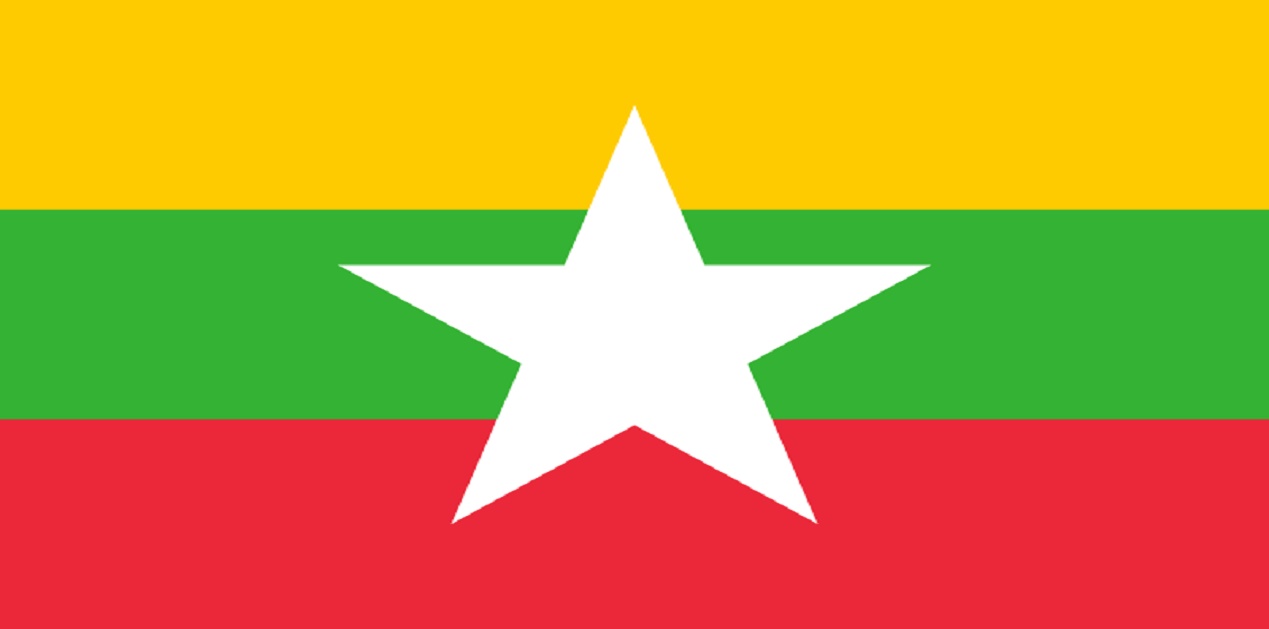
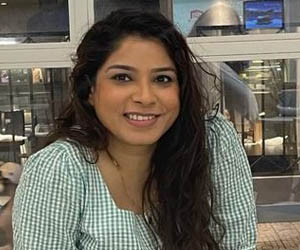


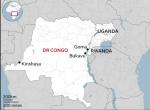
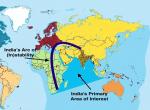

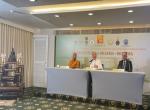
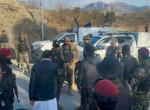

Post new comment